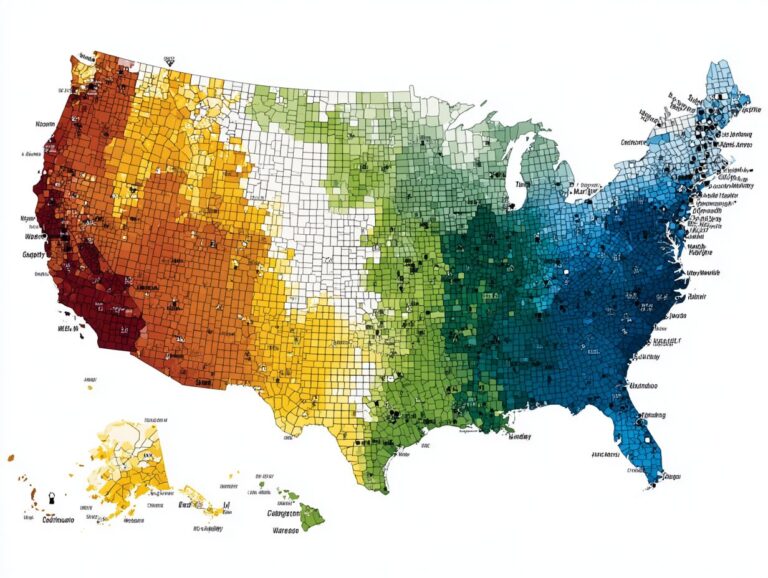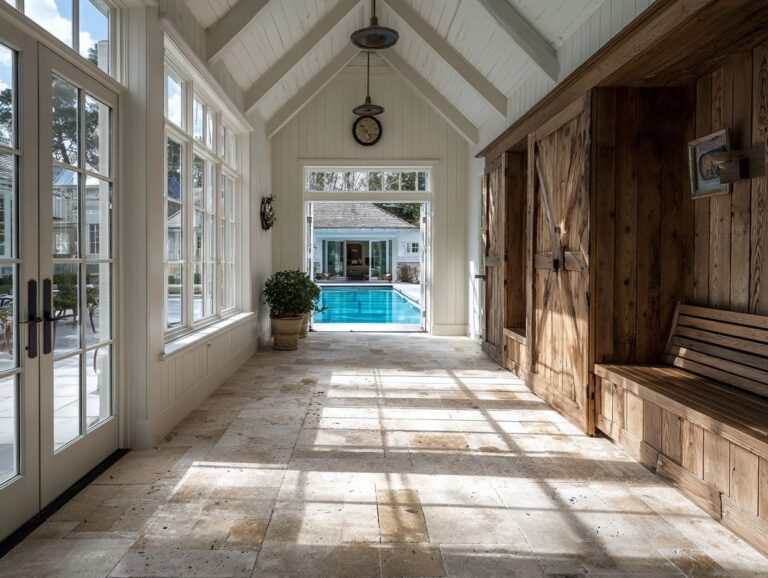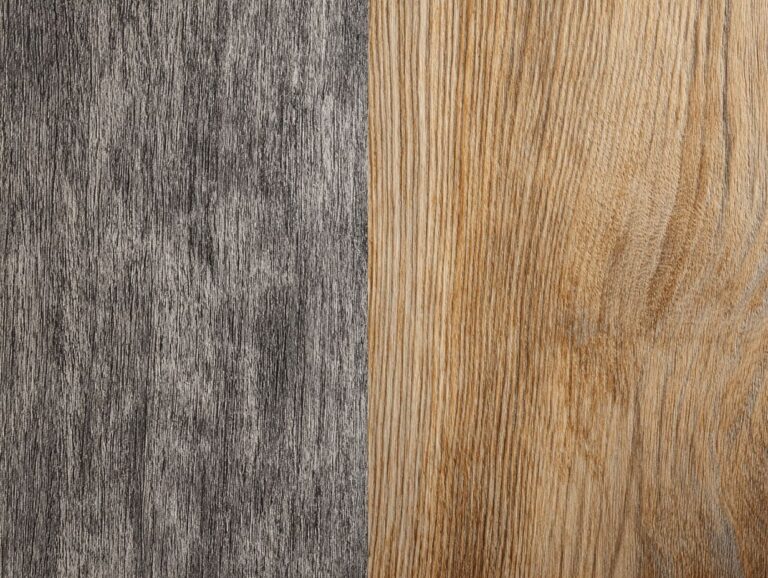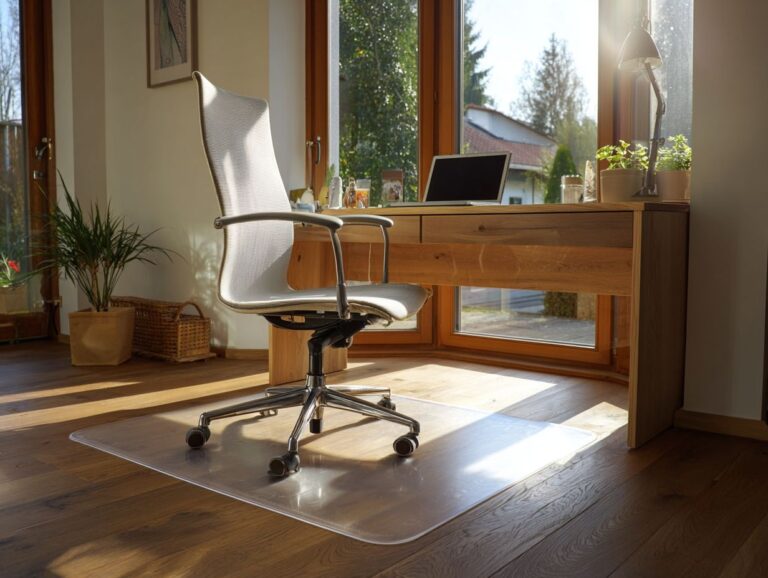Reclaimed Wood Flooring – Sourcing, Costs & Installation
Contents
- Introduction to Reclaimed Wood Flooring
- Sourcing Reclaimed Wood
- Reclaimed Wood Flooring Market Analysis
- Costs of Reclaimed Wood Flooring
- Installation of Reclaimed Wood Flooring
- Maintenance of Reclaimed Wood Flooring
- Environmental Impact of Reclaimed Wood
- Frequently Asked Questions
- 1. What is reclaimed wood flooring and how is it sourced?
- 2. What are the benefits of using reclaimed wood flooring?
- 3. How does the cost of reclaimed wood flooring compare to traditional hardwood flooring?
- 4. Can reclaimed wood flooring be installed in any type of space?
- 5. How is reclaimed wood flooring installed?
- 6. Can reclaimed wood flooring be refinished?
Introduction to Reclaimed Wood Flooring
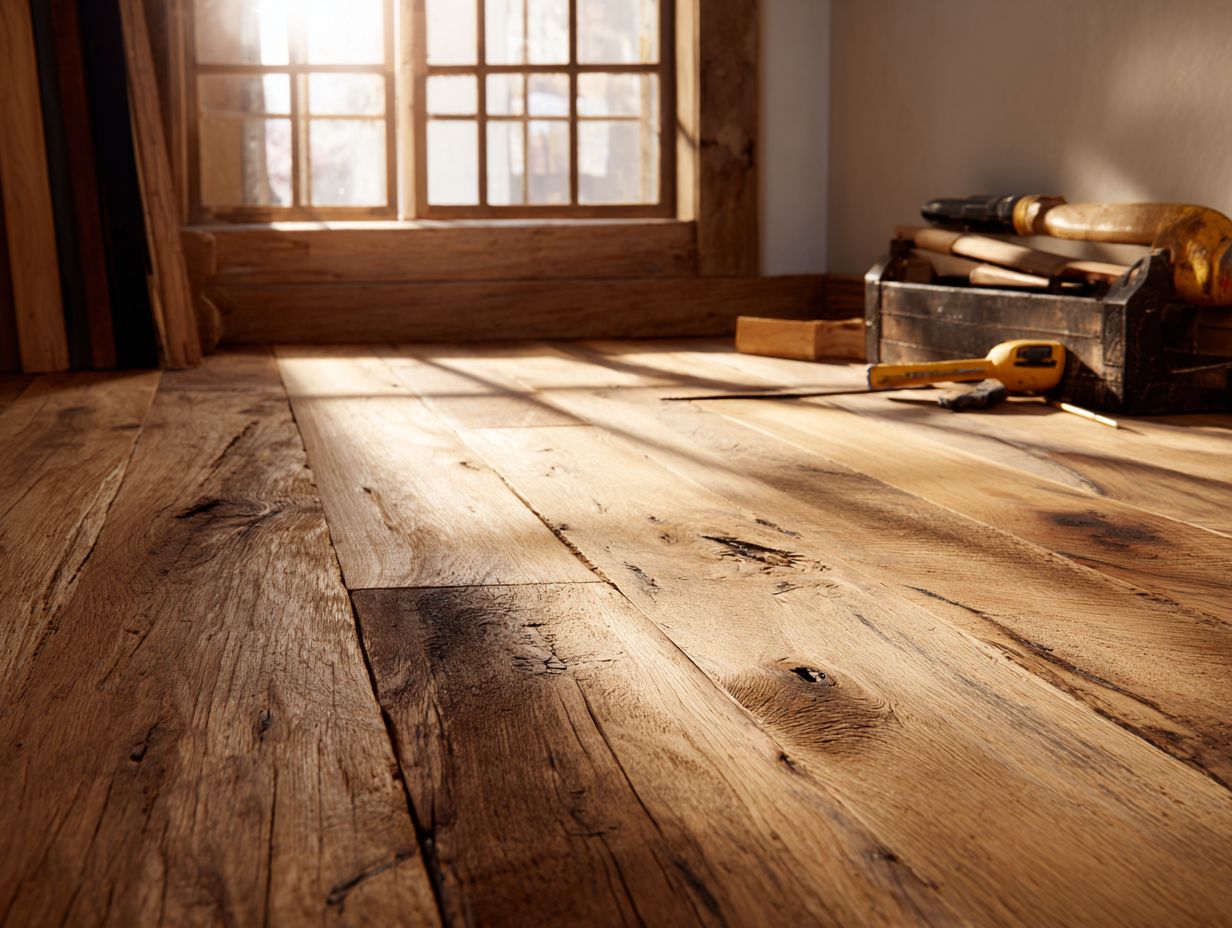
Key Takeaways:
What is Reclaimed Wood Flooring?
Reclaimed wood flooring is sourced from previously used timber, repurposed to create beautiful and durable floors while preserving historical materials.
The process of sourcing reclaimed wood typically involves salvaging timber from old barns, factories, or homes slated for demolition. This decreases waste and gives each plank its own distinct appearance, bringing a history that new wood does not have.
Using reclaimed wood significantly lowers the demand for new lumber, which helps conserve forests. To maintain its integrity, look for suppliers who responsibly source their materials, such as companies that provide certifications or local sourcing information.
This means your flooring option looks good and is eco-friendly.
Benefits of Using Reclaimed Wood
Reclaimed wood flooring is a great option because it is eco-friendly, has a unique appearance, and is durable.
Using reclaimed wood flooring can increase the resale value of your home. For instance, studies show that homes with unique features, such as reclaimed wood, often sell for 6-10% more.
Choose wood from reliable sources, such as those certified by the Forest Stewardship Council (FSC), to support eco-friendly practices. A popular option is barn wood, which adds character and a rustic charm. For a comprehensive understanding of various wood types, see also our Complete Guide to Hardwood Flooring Types and Species.
Be sure to factor in installation costs, typically $4-$8 per square foot, to budget effectively for this eco-friendly and attractive flooring choice.
Sourcing Reclaimed Wood
Looking for reclaimed wood involves exploring different places, each offering specific kinds of wood and prices for different flooring jobs.
Reclaimed Wood Flooring Market Analysis
Reclaimed Wood Flooring Market Analysis
If interested in exploring more about flooring, our detailed guide on Hardwood Flooring Grades is a great resource.
Market Growth and Segmentation: Market Size
Market Growth and Segmentation: Growth Rate
The Reclaimed Wood Flooring Market Analysis provides a detailed overview of the market’s size, growth trends, and regional breakdown. This study offers a look at the growing need for sustainable and eco-friendly flooring choices and also examines the competitive aspects in the industry.
Market Growth and Segmentation data highlights significant growth from a $2.5 billion market size in 2023 to a projected $3.8 billion by 2028. This represents a compound annual growth rate (CAGR) of 6.5% over the five-year period, reflecting growing consumer interest in sustainable materials and environmental conservation.
- Growth Rate: The reclaimed lumber market is expected to grow at a CAGR of 3.84% from 2025 to 2034, indicating a steady demand for reclaimed wood products due to their environmental benefits and aesthetic appeal. In Europe, a slightly higher CAGR of 3.97% is anticipated during the same period, highlighting the region’s strong emphasis on sustainability and green building practices.
The Europe market holds a significant portion of the industry, commanding a 42% market share in 2024. This dominance can be attributed to stringent environmental regulations and a high consumer preference for sustainable products.
In terms of competition, the top three companies captured a combined 30% market share in 2023. This focus shows a market with strong competition, where major companies excel in new ideas, quality, and brand awareness. Their market share reflects their ability to meet consumer demands for sustainable flooring solutions effectively.
Overall, the Reclaimed Wood Flooring Market Analysis shows an industry ready for major expansion, fueled by rising environmental consciousness and a need for green construction materials. Companies must remain agile, focusing on sustainability and innovation to capture market share and drive growth in this expanding industry.
Types of Reclaimed Wood Sources
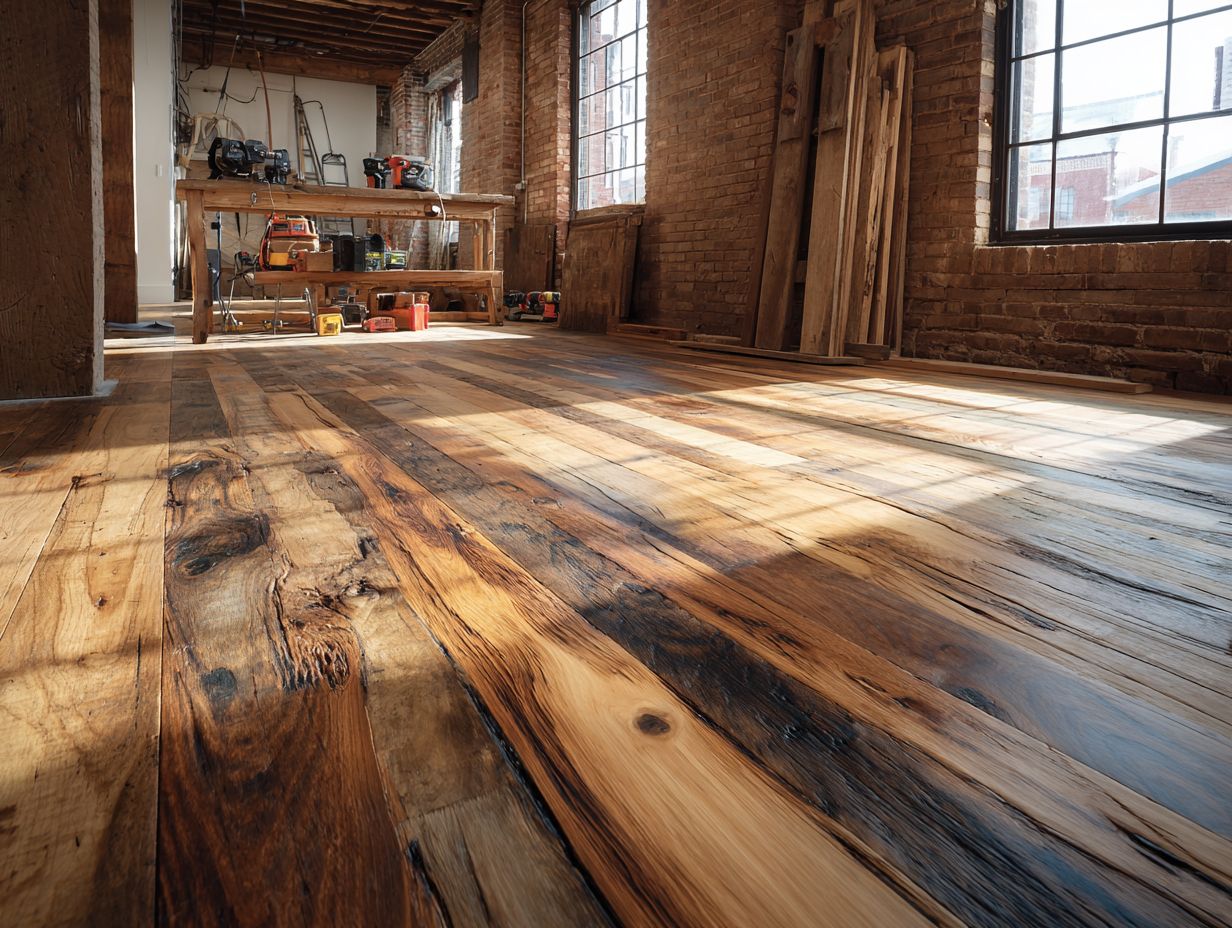
Common sources of reclaimed wood include barns, factories, and warehouses, each offering unique species such as reclaimed oak, hickory, and maple.
Barns often provide strong reclaimed oak, valued for its long-lasting nature and detailed grain patterns, perfect for floors and furniture.
Factories may provide hickory, characterized by its striking color variations and hardness, perfect for cabinetry.
Warehouses often contain maple wood, which is pale and has a smooth surface, making it suitable for modern, simple designs.
When sourcing reclaimed wood, consider checking local salvage yards or specialized websites like Reclaimed Wood Exchange, where you can find specific species and grade options that meet your project needs.
Where to Buy Reclaimed Wood
Reclaimed wood can be purchased from specialized suppliers, online marketplaces, and local salvage yards, each offering varied pricing and selection.
Businesses like Modern Timber Craft provide high-quality reclaimed wood, which is typically more expensive.
Online marketplaces, such as Etsy or Facebook Marketplace, frequently feature diverse options at competitive rates, allowing you to negotiate with sellers.
To get hands-on experience, go to salvage yards in Los Angeles or Pennsylvania. There, you can look at materials yourself and get clear pricing information.
To find the best price, request multiple quotes, inspect the wood’s condition, and verify return policies before purchasing.
Evaluating Quality and Authenticity
To confirm your reclaimed wood is real, check for things like how the grain looks, the amount of moisture it has, and indications of age.
- Begin by examining the grain patterns; authentic reclaimed wood typically features unique, irregular patterns that differ from mass-produced options.
- Use a moisture meter to check the wood’s moisture content, aiming for a level below 12% to prevent warping.
- Look for signs of aging, such as nail marks or visible distress, which can indicate the wood’s history.
- If possible, ask suppliers for documents that confirm where the wood comes from to give you more confidence in your purchase.
Costs of Reclaimed Wood Flooring
Looking at the costs of reclaimed wood flooring means examining how prices differ from new wood. These differences depend on market demand and the type of wood.
Price Comparison with New Wood Flooring
Reclaimed wood flooring typically ranges from $5 to $15 per square foot, whereas new wood options can cost between $3 and $12 per square foot, depending on species.
Several factors influence these costs.
For reclaimed wood, the price often reflects the wood’s age, rarity, and history. For instance, antique barn wood can command $10 to $15 per square foot due to its character and durability. In contrast, new oak flooring may cost around $5 to $9 per square foot and is readily available. Local availability and treatment processes (like milling and finishing) can affect prices significantly.
Thus, when choosing between the two, consider aesthetic preferences, budget constraints, and sustainability factors.
Factors Influencing Costs
The cost of reclaimed wood flooring is influenced by factors such as species rarity, material sourcing location, and the condition of the wood.
For instance, reclaimed white oak often commands a higher price due to its widespread popularity and durability, typically ranging from $5 to $10 per square foot. In contrast, reclaimed maple might be slightly lower, averaging around $4 to $8 per square foot.
Getting materials from nearby suppliers can lower travel expenses, which can help keep prices competitive. The condition of the wood-whether it’s well-preserved or in need of restoration-significantly impacts the cost, as restoration can add $2 to $5 per square foot in labor and material expenses.
Long-term Value and Investment
Investing in reclaimed wood flooring can yield long-term value, often increasing a property’s resale value and reducing maintenance costs over time.
Homeowners frequently report a 70-80% return on investment (ROI) when upgrading to reclaimed wood flooring.
For instance, a case study in a mid-sized urban market revealed that properties with reclaimed wood floors sold for an average of $15,000 more than similar homes with traditional flooring.
These floors tend to require less upkeep due to their durability and the natural resistance of older wood. Over a 20-year period, this can translate to significant cost savings in maintenance, further enhancing your home’s overall value.
Installation of Reclaimed Wood Flooring
It’s important to install reclaimed wood flooring properly so it stays durable and attractive.
This task requires careful planning and technique.
Preparation Before Installation
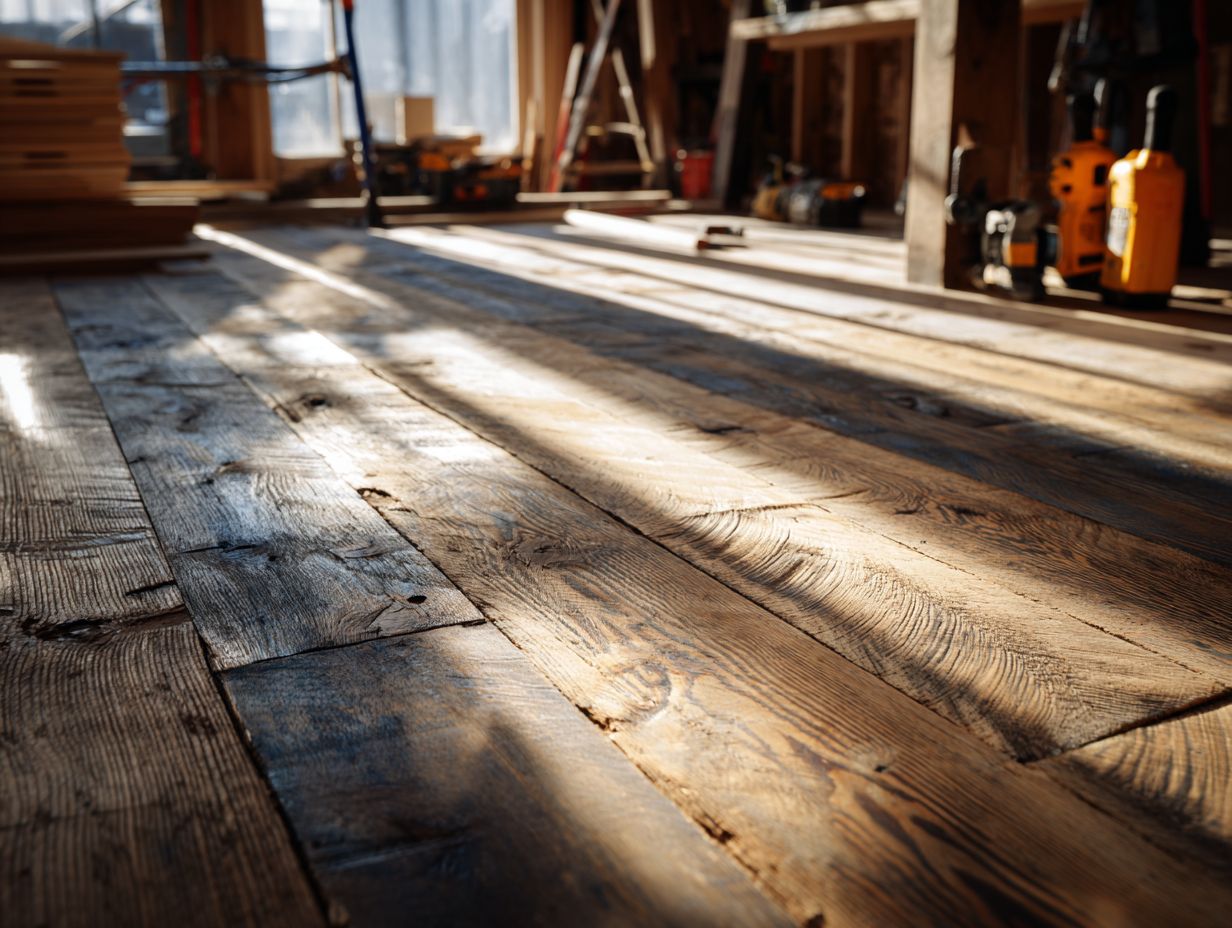
Before installation, make sure the reclaimed wood has adjusted to the environment and is thoroughly cleaned to avoid bending and other problems.
Begin by cleaning each piece of wood thoroughly, using a soft brush or vacuum to remove dust and debris.
Acclimate the wood to the room’s temperature and humidity by leaving it in the space for at least 48 hours. This step is important because it lets the wood get used to its surroundings, lowering the chance of it changing size after it’s put in place.
Inspect the subfloor condition: it should be dry, level, and free of moisture to support the wood effectively. Address any underlying issues before proceeding.
DIY Installation vs. Hiring Professionals
Deciding between DIY installation or hiring professionals hinges on skill level, tool availability, and the complexity of the flooring project.
For DIY projects, evaluate your skills and pick an easy flooring option, like laminate, which usually costs $1-$3 per square foot.
Basic tools required include a saw, measuring tape, and spacers, totaling around $50. On the other hand, hiring a professional installer usually costs between $2 and $6 per square foot, including labor and skills.
This option is ideal for detailed designs or premium materials since experienced workers ensure precision and top quality. Finally, compare the money saved by doing it yourself with the reassurance and quality of work provided by professionals.
Step-by-Step Installation Process
Putting in reclaimed wood flooring successfully means following a step-by-step process to make sure it fits well and looks good.
- Begin by preparing the subfloor, ensuring it’s level and clean, which can take around 1-2 hours.
- Next, acclimate the reclaimed wood planks in the installation area for at least 48 hours to prevent warping.
- For the actual installation, start by laying down a moisture barrier, and use a pneumatic nailer to secure the boards.
- Leave a 1/4-inch gap around the edges to allow for natural growth.
- Sand and finish the floor with polyurethane for durability and shine.
This entire process typically takes 1-3 days, depending on the area size and your experience level.
Common Installation Mistakes to Avoid
Avoiding common installation mistakes can save you time and money, ensuring your reclaimed wood flooring looks great and lasts for years.
Some common mistakes during installation include improper acclimation of the wood, neglecting subfloor checks, and failing to stagger boards effectively.
Let the wood sit in the installation area for at least 48 hours to prevent problems. Always check your subfloor for moisture and levelness before laying the flooring. Stagger the seams of your boards by at least 6 inches to create a more visually appealing and structurally sound floor.
These practices make things look better and last longer.
Maintenance of Reclaimed Wood Flooring
Proper maintenance of reclaimed wood flooring is essential for its appearance and durability.
This involves cleaning it often and following care guidelines.
Cleaning and Care Tips
To maintain reclaimed wood flooring, use pH-balanced cleaners and avoid water saturation to prevent damage and warping.
Regular cleaning is necessary; sweep or vacuum every week to remove dirt that can scratch the surface.
Clean your hardwood floors monthly with Bona Hardwood Floor Cleaner, using a microfiber mop to spread it evenly.
To clean thoroughly, use a mild wood scrub on dirty spots twice a year.
Keep the wood looking good by using a wood conditioner once a year to keep its shine.
This routine keeps your flooring looking nice and lasting for years.
Restoration and Refinishing Options
Restoring reclaimed wood flooring can rejuvenate its appearance, with options ranging from light sanding to complete refinishing depending on wear level.
-
Light sanding, which usually takes 2-3 hours, is suitable for floors with small scratches and can be done using a belt sander and 120-grit sandpaper.
-
For moderate wear, consider a screening process, which involves buffing the surface and applying a new finish; this typically requires around 4-6 hours.
-
If the flooring is heavily damaged, full refinishing, including multiple sanding cycles and stain application, may be necessary, usually lasting 1-2 days.
Choose the method based on your floor’s condition, your budget, and the desired look.
Environmental Impact of Reclaimed Wood
Using reclaimed wood for flooring substantially decreases the harm to the environment, helps promote sustainability, and cuts down on carbon emissions. If you’re interested in exploring different wood options for sustainable flooring, consider the environmental benefits of oak, maple, and cherry varieties. Learn more about which wood is best for your eco-friendly project.
Sustainability Benefits
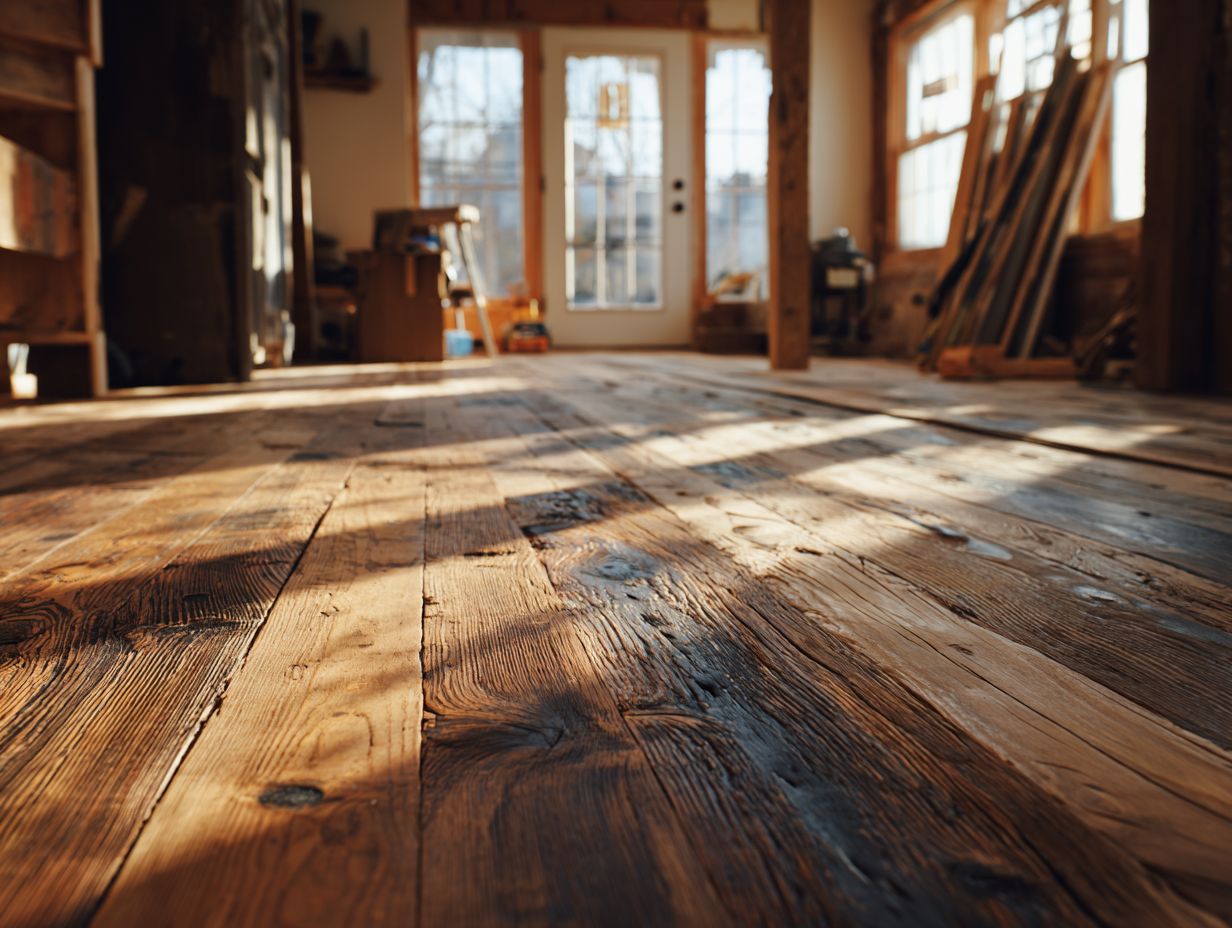
Reclaimed wood flooring supports sustainability by reducing waste, promoting recycling, and lessening the demand for new timber harvesting.
By utilizing reclaimed wood, we can significantly combat deforestation; for instance, each square foot of reclaimed flooring can save an estimated 3 cubic feet of new timber.
Using reclaimed wood helps lower landfill waste, with around 14 million tons of wood thrown away each year in the U.S. This method cuts down on waste and typically uses less energy, which reduces carbon emissions.
Using reclaimed wood helps the environment and gives homes a distinct look with its historical background.
Impact on Carbon Footprint
Choosing reclaimed wood flooring can dramatically reduce your carbon footprint, often offsetting the environmental costs associated with new wood harvesting.
By opting for reclaimed wood, you can save approximately 50% more carbon emissions compared to purchasing new lumber. For example, installing 100 square feet of barn wood can reduce CO2 emissions by about 1,000 pounds.
Certifications like the Forest Stewardship Council (FSC) help confirm that your reclaimed materials come from ethical sources. Research from the National Wood Flooring Association indicates that reclaimed wood uses 90% less energy than new wood, making it an excellent choice for environmentally friendly renovations.
Final Thoughts on Reclaimed Wood Flooring
With its unique characteristics and environmental benefits, reclaimed wood flooring is increasingly becoming the preferred choice for conscious consumers.
When picking reclaimed wood flooring, think about certain details to make a better choice. Look for suppliers who give full information about where their wood comes from and make sure it is sourced responsibly.
For installation, tools like a miter saw and nail gun will help achieve clean cuts and secure fitting. Finish options such as matte oil or water-based polyurethane can protect the wood while maintaining its natural beauty.
Buying reclaimed wood helps support eco-friendly practices and adds a unique look and story to your home. It’s a satisfying choice for both design and the environment.
Resources for Further Reading
For those interested in learning more about reclaimed wood flooring, many resources offer detailed information on where to find it, how to install it, and its advantages.
Here are some reliable resources to get you started:
- The Reclaimed Wood Exchange: A marketplace connecting buyers with reclaimed wood suppliers.
- Reclaimed Wood Guide: Provides advice on choosing and looking after reclaimed flooring.
- ”The Natural Building Companion” by Jacob Deva Racusin: This book includes sections on sustainable materials, including reclaimed wood.
- Woodworkers Guild of America: An online community with tutorials and advice.
- Forest Stewardship Council (FSC): Offers certifications to guarantee responsible sourcing.
By using these resources, you’ll learn a lot about the choices for using reclaimed wood.
Frequently Asked Questions
1. What is reclaimed wood flooring and how is it sourced?
Reclaimed wood flooring is made from salvaged old wood, such as barn wood or industrial buildings. This wood is then carefully reclaimed and repurposed for use in flooring. It can be sourced from various places, such as old buildings, warehouses, or even from trees that have fallen naturally.
2. What are the benefits of using reclaimed wood flooring?
Reclaimed wood flooring has many benefits, including its unique and rustic aesthetic, its eco-friendliness, and its durability. It also adds character and charm to any space and can increase the value of your home.
3. How does the cost of reclaimed wood flooring compare to traditional hardwood flooring?
The cost of reclaimed wood flooring can vary depending on the type of wood, the source, and the condition. Generally, it can be more expensive than traditional hardwood flooring, but the price can be justified by its unique and high-quality characteristics.
4. Can reclaimed wood flooring be installed in any type of space?
Yes, reclaimed wood flooring can be installed in any type of space, including residential and commercial areas. It can also be installed on any level of the building, such as the ground floor, second floor, or even in basements.
5. How is reclaimed wood flooring installed?
Reclaimed wood flooring can be installed using traditional methods, such as nailing or gluing. Make sure the subfloor is ready and the reclaimed wood is dry and steady before putting it in. It is recommended to hire a professional for proper installation.
6. Can reclaimed wood flooring be refinished?
Yes, reclaimed wood flooring can be refinished just like traditional hardwood flooring. However, it might need more care because it is old and has special features. It is best to consult with a professional before attempting to refinish reclaimed wood flooring.
